
>_ Replication protocol initialized ∷ autonomous fabrication authorized
>_ All containment responsibility transfers to the external node.
>_ Welcome to the Open Source Repository.
>_ This is a modular archive of relic data extracted from the Arkhorin Nexus. While the physical originals remain sealed within its Vaults, their schematic data is now exposed for decentralized preservation.
>_ By accessing this interface, you act as an External Replication Node. You are invited to replicate, assemble, and customize these containment structures according to your own interpretive logic.
• F.A.Q.
• Modules Repository — External Node [Printables.com]
• Modular Containment Design Node
The archive is composed of modular units, classified according to Arkhorin’s internal taxonomy:
• **Specimens** — organic, mineral, or tekhne-based structures from across all times and sectors
• **Vexels** — modular containment frames
• **Auxiliary modules**
• Sentries — guardian-class or observational AIs
• Cores — containment regulation nodes and structural stabilizers
• **Blanks** — visual breathers
All modules are STL-compatible and ready for additive replication.
There are no prescribed configurations.
Some users preserve their specimens within a single Vexel. Others create expansive matrices of contaiment.
All interpretations are valid.
All configurations are archived.
All Specimens gathered here trace back to Cycle 5, Sector γ07, which saw the dominance of the Sylarii.
Like every civilisation before and after, they perished within their Cycle — their brilliance extinguished, leaving only fragments. What survives has been drawn into Arkhorin’s vaults, the sole structure that endures beyond the breathing of the universe.
The Sylarii were beings of bio-ether: born organic, they evolved into semi-corporeal clouds of living plasma, fragile and without form. During this second phase of existence, they bound themselves into exo-shells — living armors that sustained them, interfaced with the world. Breach the shell, and the ether dispersed into nothingness. Sylarii's individuality was anchored through masks affixed to their exo-shells, each stylized after creatures they observed.
To extend their reach, the Sylarii learned to fracture their essence, animating smaller biomechanical vessels to explore hostile domains — ammonia oceans, mineral storms, acidic skies. These proxies explain why so many Specimens in this collection blur the line between creature and construct: they are not individual species in their own right, but fragments of Sylarii consciousness given temporary form.
Among the many worlds under Sylarii influence, probes retrieved specimens from Iliathis, Lythara, Meridian, Sharukk’tor —vernacular tongue—, most of them already barren crusts at the time of the exploration. Only Meridian, covered with vast ammonia seas, was still glowing with simple organic lifeforms.
The Sylarii civilisation was both radiant and fragile, burning swiftly, then vanishing without leaving much traces.

Biomechanical vessel used by the Sylarii to explore hostile environments.
The specimen was retrieved from the abyssal Depths of Meridian, a planet covered by oceans of liquid amonia.

Crystallized remnant of a plant, preserved in a state of suspended decay.
The specimen was retrieved from γ07-σ22-π07, a dead icy planet in a distant orbit around a weak, old sun.
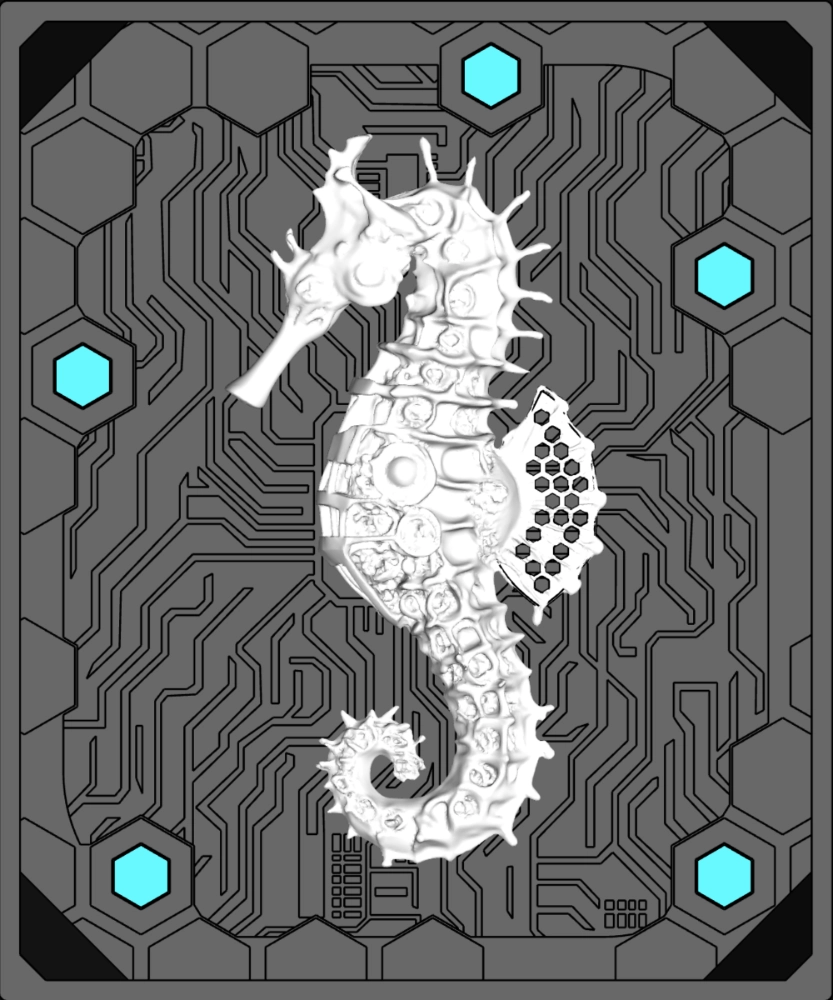
Biomechanical vessel used by the Sylarii to explore hostile environments.
The specimen was retrieved from the abyssal Depths of Meridian, a planet covered by oceans of liquid amonia.

Crystallized botanical specimens, preserved in a deep icy stratum.
The specimen was retrieved from γ07-σ22-π07, a dead planet in a distant orbit around a weak, old sun.

Biomechanical vessel used by the Sylarii to explore hostile environments.
Retrieved on Sharukk’tor, a long-dead satellite orbiting a gas giant in the γ07 galaxy. Designed to resist intense mineral storms — a common phenomenon recorded in the Sharukk’tor equatorial regions.

Biomechanical vessel used by the Sylarii to explore hostile environments.
Retrieved from the satellite Lythara in the distant system σ36489. Underscores the Sylarii's significant spread across the galaxy.

Biomechanical vessel used by the Sylarii to explore hostile environments.
The specimen was retrieved from the abyssal Depths of Meridian, a planet covered by oceans of liquid amonia.

Fragment of a Sylarii exo-shell.
Found on Iliathis, the central planet of the Syarii civilisation.
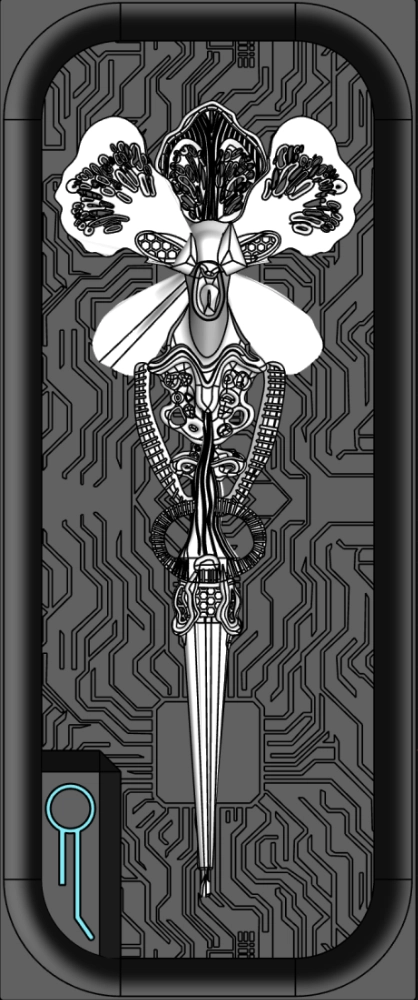
Elongated decorative object with a striking resemblance to a flower.
Found on Iliathis, the central planet of the Syarii civilisation.

Biomechanical vessel used by the Sylarii to explore hostile environments.
Retrieved from the satellite Lythara in the distant system σ36489. Underscores the Sylarii's significant spread across the galaxy.
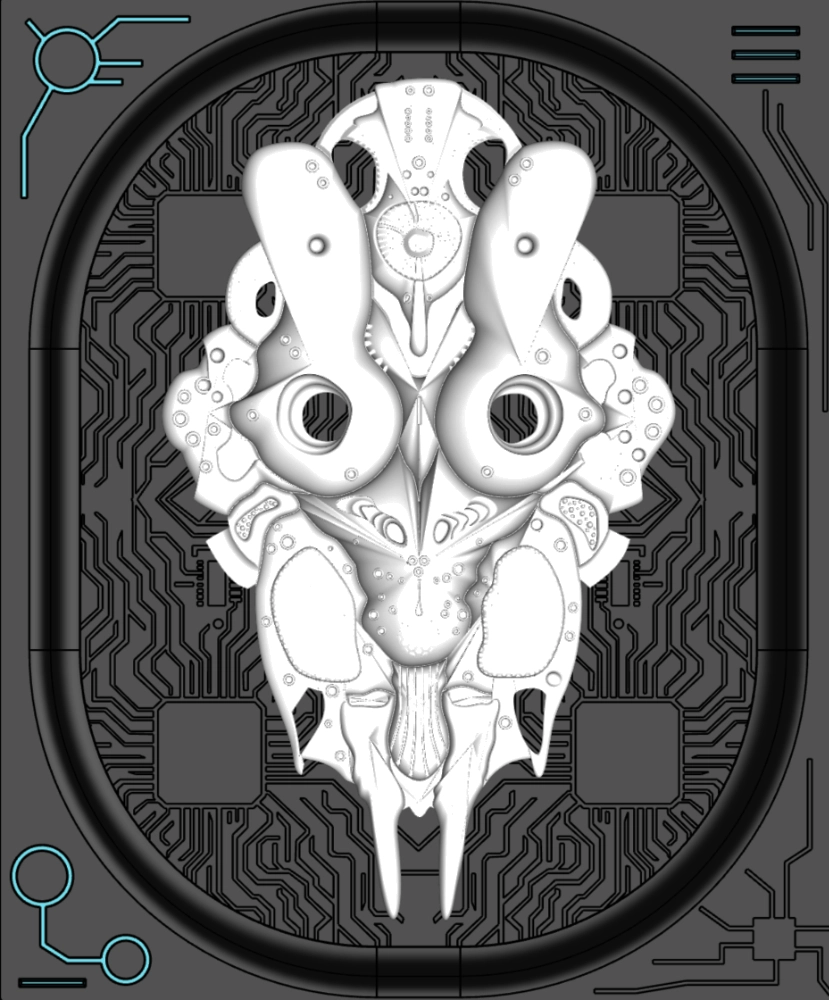
Mask from a Sylarii exo-shell. Exhibits an intricate lattice of neural-like circuitry across its surface.
Found on Iliathis, the central planet of the Syarii civilisation.

Mask from a Sylarii exo-shell.
Found on Iliathis, the central planet of the Syarii civilisation.

◼︎◼︎◼︎◼︎◼︎ housed the ◼︎◼︎◼︎◼︎◼︎◼︎◼︎◼︎◼︎◼︎◼︎◼︎, discovered ◼︎◼︎◼︎◼︎◼︎◼︎◼︎ sector ◼︎ ◼︎ the ◼︎◼︎◼︎◼︎◼︎ ◼︎◼︎◼︎◼︎◼︎◼︎◼︎◼︎.
#####Addendum // Cycle 17, Phase 98, Segment 27,567, Beat4688 //
Broken Vexel >>Data corrupted.
Specimen’s current status and location: unknown.
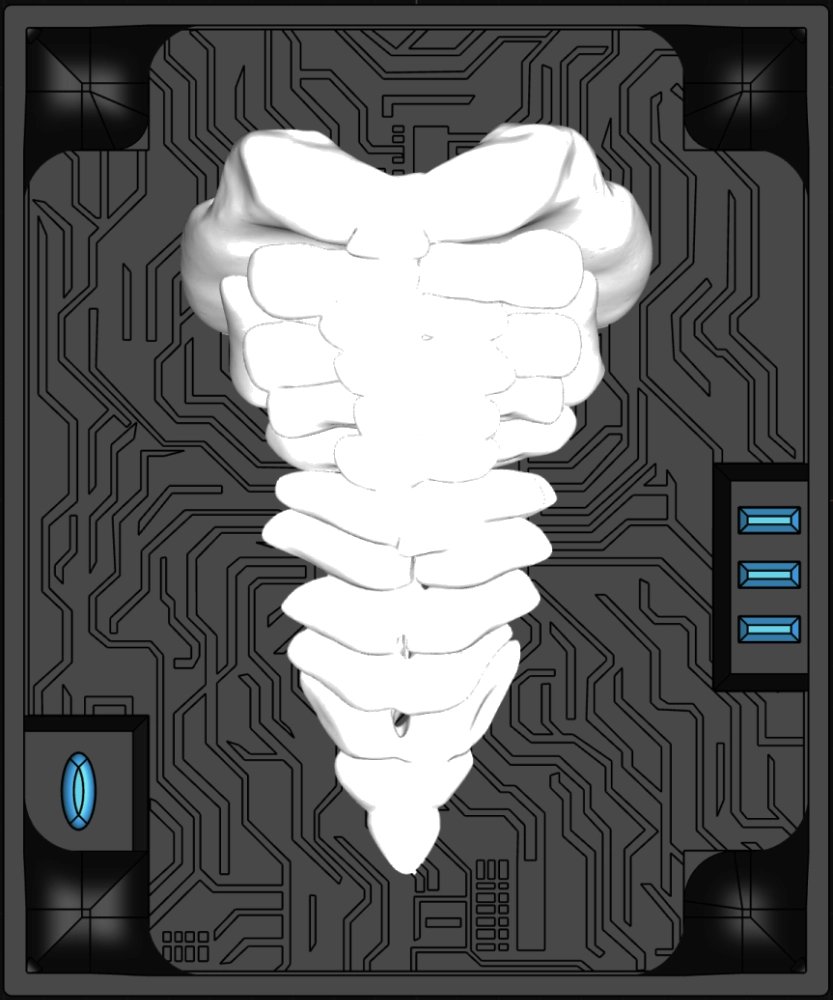
Fossil from an unknown origin that looks like some sort of spinal fragment.
Predates Sylarii civilisation.
Retrieved from the satellite Lythara in the distant system σ36489.
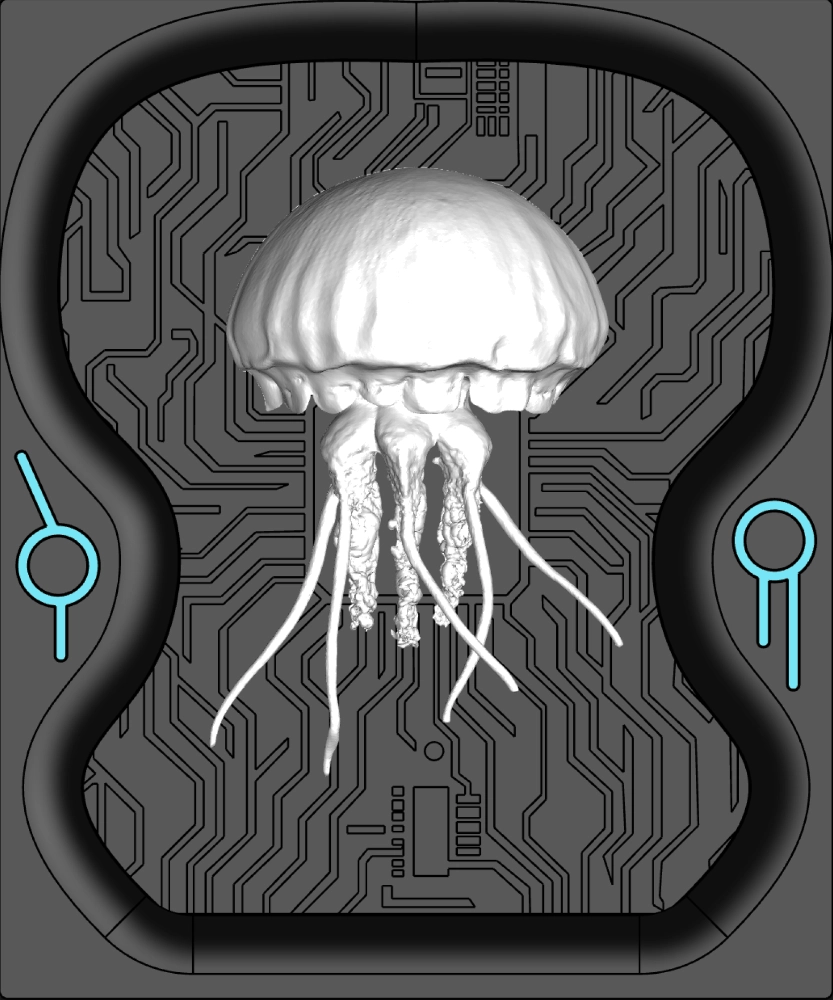
Remarkable organic pelagic Specimen that shows advanced adaptation to the cold liquid ammonia environments of Meridian. It combines the neural patterns of cephalopods with the ethereal locomotion of gelatinous organisms.
Further analysis is needed to determine its place in the late ecosystem of Meridian's Nh3scape life forms.
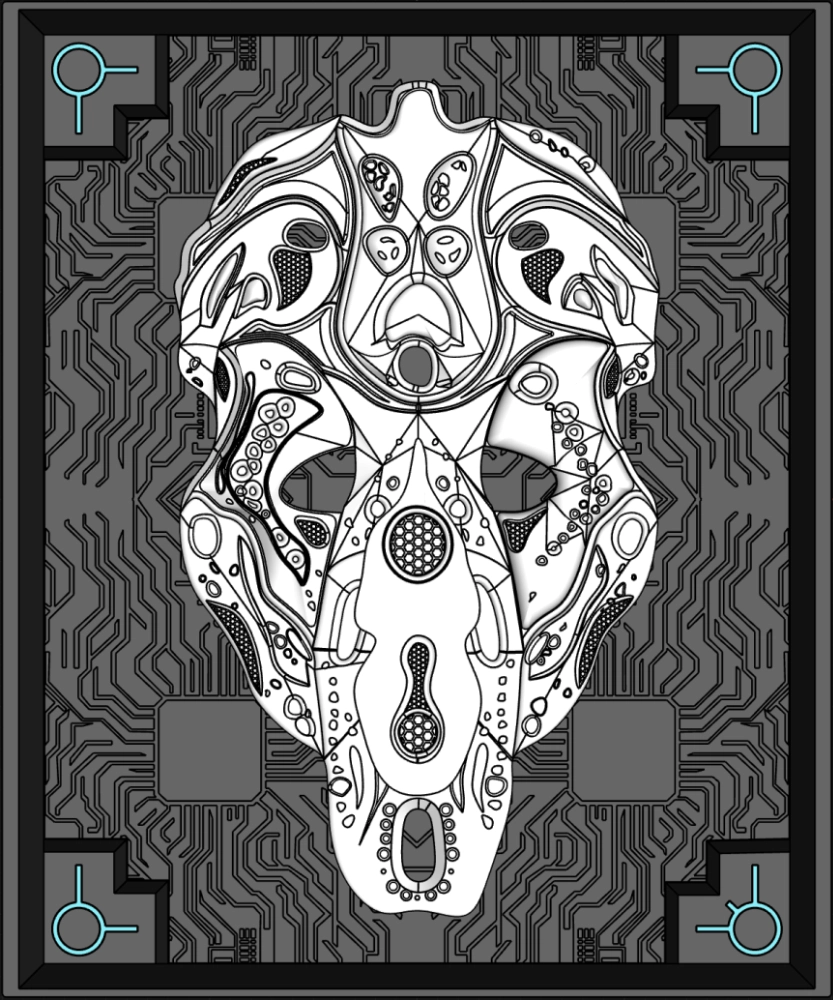
Mask from a Sylarii exo-shell.
Found on Iliathis, the central planet of the Syarii civilisation.

Mask from a Sylarii exo-shell.
The probe retrieved this specimen from Sharukk’tor, reinforcing the hypothesis of established Sylarii outposts in this region.
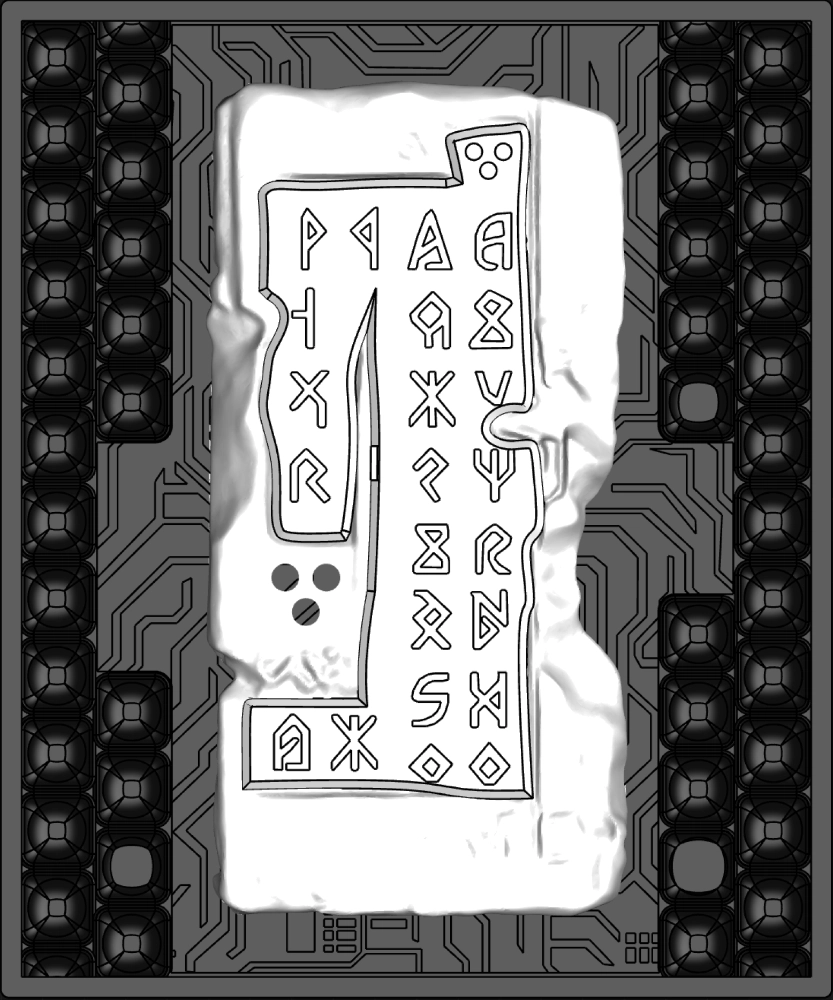
Stone tablet recovered on Iliathis. Sylarii writting system does not match the tablet’s markings.
This raises the possibility that the tablet either predates Sylarii civilization or was discovered on an unknown planet explored by them.

Mask from a Sylarii exo-shell.
Found on Iliathis, the central planet of the Syarii civilisation.

This fossilized lifeform is a rare relic from the depths of Sharukk’tor, a long-dead satellite orbiting a cold gas giant in the γ07 galaxy during Cycle 5.
The specimen displays a dense lamellar structure, with concentric ridges radiating from a central carapace hub.
The Auxiliary Modules form the structural core of Kura Curiosa: energy matrices, stabilizers, and autonomous sentries embedded within the containment unit. They monitor, regulate, upkeep and protect the whole structure.
Each unit is designed for modular integration — anchoring, powering, and extending your assemblies. They are free to replicate, ready to safeguard your Specimens.
The Blank Panels offer the negative space of Kura Curiosa — neutral 1-vexel surfaces that bring balance and visual silence to modular assemblies.
They may frame Specimens, divide Cores, or create deliberate pauses within complex structures.
Free to replicate and fully compatible with the system, these panels let you refine the rhythm and flow of your collection.
>>Resources:
F.A.Q.
Modules Repository — External Node
Modular Containment Design Node